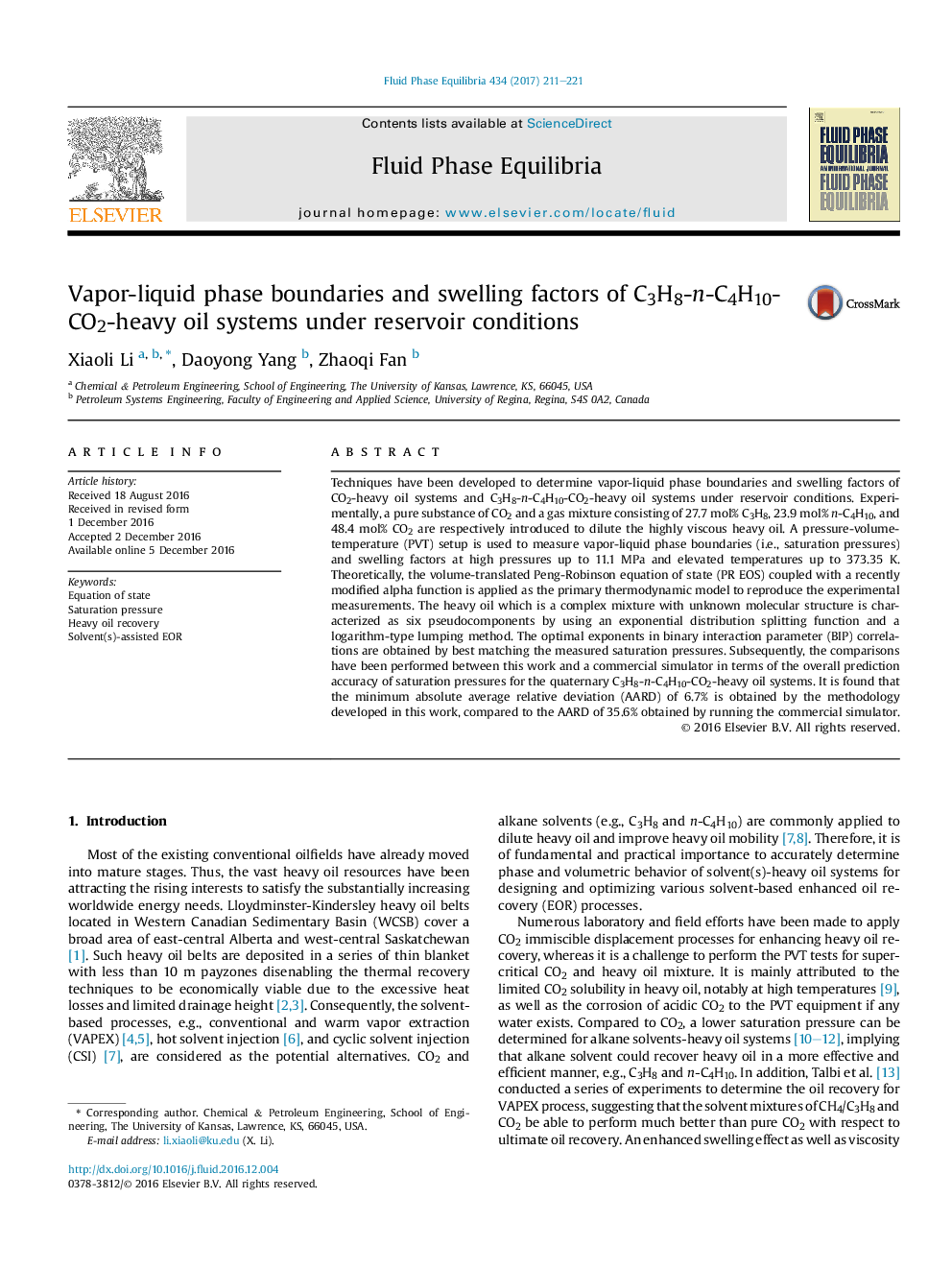| Article ID | Journal | Published Year | Pages | File Type |
|---|---|---|---|---|
| 4768070 | Fluid Phase Equilibria | 2017 | 11 Pages |
Abstract
Techniques have been developed to determine vapor-liquid phase boundaries and swelling factors of CO2-heavy oil systems and C3H8-n-C4H10-CO2-heavy oil systems under reservoir conditions. Experimentally, a pure substance of CO2 and a gas mixture consisting of 27.7Â mol% C3H8, 23.9Â mol% n-C4H10, and 48.4Â mol% CO2 are respectively introduced to dilute the highly viscous heavy oil. A pressure-volume-temperature (PVT) setup is used to measure vapor-liquid phase boundaries (i.e., saturation pressures) and swelling factors at high pressures up to 11.1Â MPa and elevated temperatures up to 373.35Â K. Theoretically, the volume-translated Peng-Robinson equation of state (PR EOS) coupled with a recently modified alpha function is applied as the primary thermodynamic model to reproduce the experimental measurements. The heavy oil which is a complex mixture with unknown molecular structure is characterized as six pseudocomponents by using an exponential distribution splitting function and a logarithm-type lumping method. The optimal exponents in binary interaction parameter (BIP) correlations are obtained by best matching the measured saturation pressures. Subsequently, the comparisons have been performed between this work and a commercial simulator in terms of the overall prediction accuracy of saturation pressures for the quaternary C3H8-n-C4H10-CO2-heavy oil systems. It is found that the minimum absolute average relative deviation (AARD) of 6.7% is obtained by the methodology developed in this work, compared to the AARD of 35.6% obtained by running the commercial simulator.
Related Topics
Physical Sciences and Engineering
Chemical Engineering
Chemical Engineering (General)
Authors
Xiaoli Li, Daoyong Yang, Zhaoqi Fan,
